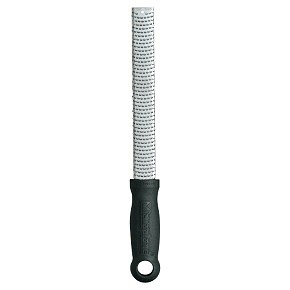
In honor of the most sacred, precious, and meaningful holiday of the year... lets talk pumpkin seeds again. Here's one from last year that I love.
Dear Tricia, Pumpkin carving season is upon us, and I hate for anything to go to waste. It turns out pepitas are one of my favorite salty-go-with-beer accessories. The problem is, when I harvest those little seeds of joy myself and try to roast them, they turn out to be chewy bits of hell. How do I get the crisp, salty bites of love that I crave?
First of all, kudos to you for not letting those little gems go to waste. This reminds me of the rocky mountain oyster post I wrote a few months ago, except that my readers will actually eat pepitas. Pepitas are roasted pumpkin seeds, by the way. It's how they're referred to in Mexican cooking and you'll often see them in the bulk section of the grocery store labeled as such. The difference between what you see in the store and what's inside a pumpkin is that what's inside the pumpkin seed still has the hull, or shell around it. Inside the hull is a little green kernel that is a little easier to chew, but both are completely edible, and to take the hull off the seed is pretty labor-intensive, so for this blog entry, I'll refer to the entire seed. Plus, if you're going to ask me about eating these while drinking beer, I'm going to assume that you're not up for the dextrous challenge. No judgement though.
Oh, and I should probably write a quick disclaimer. I woke up with a cold this morning and have about 4 different medications running through my body right now, so my wit isn't exactly up to its usual ninja-like speed. I'm also cranky because I was supposed to dress up for a charity Zombie pub crawl today, and as much as I'd like to suck it up and drink vitamin C- packed screwdrivers in full zombie regale, I had to cancel. So instead, I'm medicated and experimenting with pumpkin seeds. But regardless, I'm happy to educate you, dear readers.
This is was an email I didn't immediately know the answer to. My first thought was that you're probably not cooking them long enough, but it's not that simple. In my research, there are a few different methods to getting crispy pumpkin seeds. Some people claim that boiling the pumpkin seeds before roasting them works. Others think that a low oven temperature does the trick. On my medicated no-funday Sunday, I tried 4 of these different methods. I also managed to do other super important things, like catch up on my Real Housewives of Atlanta.
With each experiment, I used 1/4 cup of fresh pumpkin seeds scraped straight from a soon-to-be jack-o-lantern. I rinsed the seeds to get all the pulp off and then set them on a paper bag to dry off for about half an hour. Before roasting, I tossed each batch in 1/2 teaspoon of olive oil and 1/2 teaspoon of sea salt.
Batch #1: I boiled the pumpkin seeds in salted water for 10 minutes. Then I roasted them at 350 degrees for 30 minutes.
Batch #2: I roasted them at 350 degrees for 30 minutes. I also started to get the spins from cramming so many vitamins into my bloodstream.
Batch #3: I boiled the pumpkin seeds in salted water for 10 minutes. Then I roasted them at 275 degrees for 1 hour.
Batch #4: I roasted them at 275 degrees for 1 hour. I think I also had made about 13 trips to the bathroom at this point from drinking so much hot tea and water.
The results? Batch #4, the seeds that weren't boiled, and baked at a lower, slower temperature were the crispiest, crunchiest and least chewy. The ones that were boiled were a little tougher than the pepitas that weren't boiled. But each one was nowhere near being a chewy bit of hell. So apparently, slow and low... that is the tempo. The only reason I can come up with for boiling the seeds first is to give them a saltier flavor (from the salt in the water), but if you prefer saltier pepitas... then just add more salt. Its not rocket science.
I just used salt and oil for my seasoning, but you can definitely get creative here: try tossing them in a little cayenne for spicy pumpkin seeds, garlic and parmesan for something Italian, or cinnamon and sugar for sweeter snacks to go with your beer. You can also use cooking spray if you don't want the fat or calories from olive oil.
Aside from tasting awesome with your beer, pumpkin seeds are also really good for you. They're high in protein, omega fatty acids, Vitamin A (to keep your eyes healthy while squinting with jack-o-lantern-carving concentration), and Potassium (to help your keep your hands from cramping).
Now back to my pepita experiment snacks, Family Guy, and thinking of something non-traditional to carve in the pumpkin. A Christmas tree, perhaps?
I must mention that my adorable and dear friend Dawn sent me this doozy of a question, and I promised her I would include the photo her ninja jack-o-lanterns from last year. So, yes, friends, I know the creator of the masterpiece in the photo above. That's just how awesome my network is.



